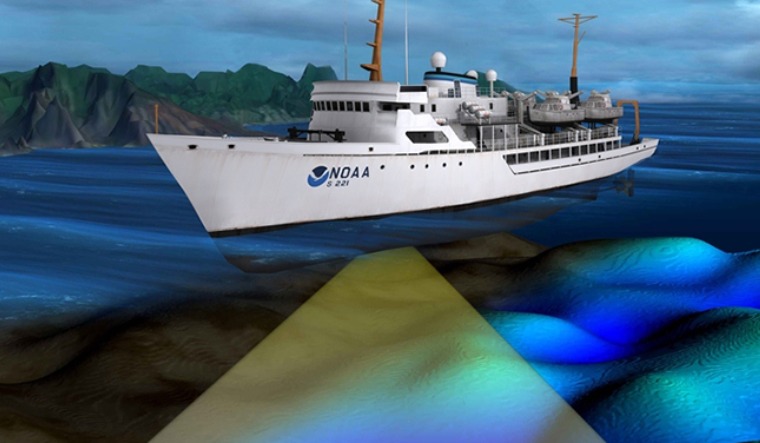In January this year, media reports claimed that a Chinese survey ship was mapping the seabed in the eastern Indian Ocean. The ship was identified as the Xiang Yang Hong 03.
Survey ships are ships equipped with specialised sonars, diving equipment and other devices to map the terrain of the seabed and assess salinity levels, nature of currents and other characteristics. The data collected by such ships can be used for both civilian and military purposes. Military purposes of data from survey ships include aiding navigation of submarines, laying of mines, tapping and destruction of underwater cables and laying of sensors to track movement of enemy ships and submarines.
On Tuesday, USNI News, a publication of the US Naval Institute, reported that one more Chinese survey ship, the Xiang Yang Hong 01, was active in the region. The positions of the two vessels was ascertained from satellite imagery and open source maritime identification systems.
"China has been systematically surveying vast swathes of the Indian Ocean. They are paying particular interest to surveying the Ninetyeast Ridge, an underwater mountain range that cuts down through the Eastern Indian Ocean from north to south. The range is particularly relevant for submarine operations. If Chinese submarines are going to increase their activity in the Indian Ocean, these maps (created by survey ships) may aid the sub’s survivability," USNI News reported.
USNI News reported, "Xiang Yang Hong 01 transited the Malacca Strait and operated further north than its sister ship... Xiang Yang Hong 03 took the Sunda Strait through Indonesia and surveyed further south, according to the tracks. Like Xiang Yang Hong 01, it mostly surveyed in long straight lines running along and across the Ninetyeast Ridge."
The area identified in the USNI News report falls to the south of the Andaman and Nicobar Islands and covers a major trade route. Highlighting its importance, USNI News reported “The area is also likely to be of interest to countries in the area that are operating submarines, including India, Indonesia and Australia. With the realignment of U.S. Pacific Command into U.S. Indo-Pacific Command, it may also signal more future U.S. Navy operations.”
In December 2019, another Chinese survey ship, the Xiang Yang Hong 06, deployed underwater gliders, which are used to collect data on currents and salinity, in the Indian Ocean. In that month, the Indian Navy expelled a Chinese research vessel, the Shi Yan 1, after it was spotted to be operating close to Port Blair.
Oceanographic survey ships have received little attention amid the dizzying growth of China's Navy. As of 2020, China had about 60 such research vessels under its State Oceanic Administration. While these vessels have sailed as far as the Arctic, it is their presence in the South China Sea, Indian Ocean and Pacific Ocean that has triggered concern.
also read
- Trump vs China could mean Rs 2 lakh crore windfall gain for India
- VIDEOS | Mumbai boat accident: FIR filed against Navy speedboat driver as ferry disaster kills 13
- Beyond border acrimony, India and China agree to look at big picture
- Indian Navy submarine collides with a fishing vessel off Goa coast, two fishermen missing
The activity of the survey ships will play a role in improving the capabilities of China's vast submarine fleet. A report of the US Congressional Research Service for 2021 estimated that by 2025, China will 47 diesel-electric submarines, 10 nuclear-powered attack submarines and six nuclear-powered ballistic missile submarines armed with nuclear weapons.
Furthermore, surveillance of the Indian Ocean could mean China could attempt to keep track of the Indian Navy's fledgling fleet of nuclear-powered submarines.




